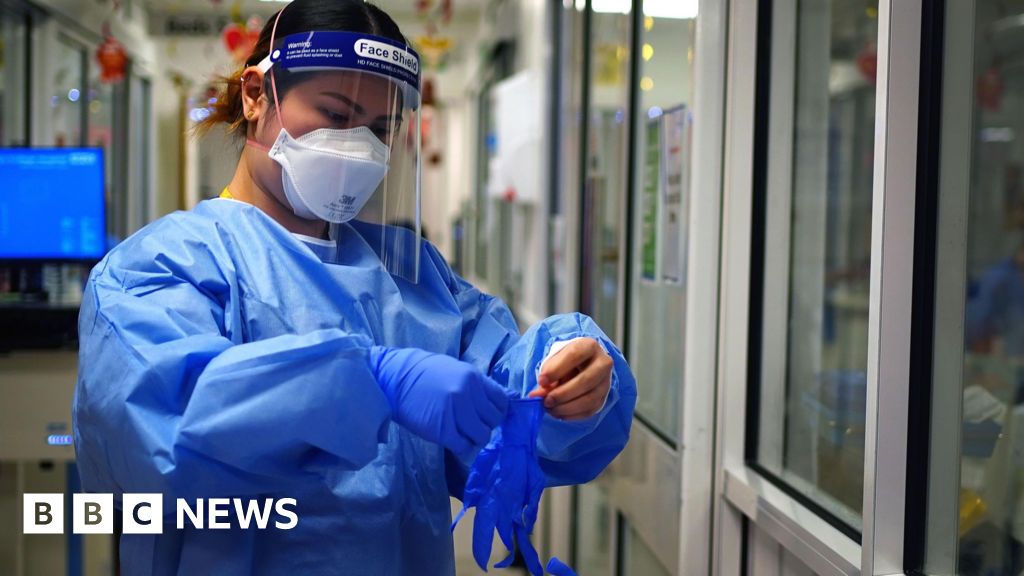‘American Malaria’ Is on the Rise
Babesiosis, a tick-borne illness, is becoming more common in the U.S.


Few things will leave you feeling quite so grossed out as returning from a jaunt outside and finding a tick clinging to your skin. Not only is the unwelcome parasite sucking the blood from your body, but it may also be leaving something behind: bacteria, viruses, or parasites that can cause at least 15 different diseases, according to the U.S. Centers for Disease Control and Prevention (CDC). Lyme disease, Powassan virus, Rocky Mountain spotted fever, and Heartland virus are just a few of them. [time-brightcove not-tgx=”true”]
Another, babesiosis, is causing particular concern. The disease is colloquially known as “American malaria,” partly because of its ever-widening spread and partly because of its clinical profile. Like malaria, the disease is caused by a parasite (carried by ticks instead of mosquitoes) that infects red blood cells. And like malaria, it can lead to headache, fever, chills, nausea, vomiting, altered mental state, anemia, low blood pressure, respiratory distress, and more.
Now, a new paper published in the journal Open Forum Infectious Diseases found that more Americans are getting babesiosis—often alongside other tick-related infections.
Paddy Ssentongo, an infection disease fellow at Penn State Health Milton S. Hershey Medical Center, and his colleagues studied more than 3,500 Americans with babesiosis from 2015 to 2022. Their first striking finding is how fast the disease is exploding across the U.S. population. In the seven-year span of the survey, cases of babesiosis increased an average of 9% per year—due, the researchers concluded, to a warming world which is expanding the range of the black-legged tick, the principal babesiosis vector. In the Northeast, the spread has been astronomical: babesiosis grew by 1,422% in Maine from 2011 to 2019, and 1,602% in Vermont during the same period, for example.
Read More: We Used to Have a Lyme Disease Vaccine. Are We Ready to Bring One Back?
The ticks are not making their way to new habitats on their own, but rather are hitching rides aboard one of their principal hosts—the white-tailed deer, who are expanding their own range, drawn by warmer temperatures and reduced snowpack.
Geography isn’t the only problem. Ticks are also carrying more pathogens. The ticks may travel on deer, but they pick up disease by feeding on mice and other small mammals; if those hosts are carrying Lyme disease or babesiosis or other infectious agents, the parasite will pick them up too—and pass them on to a human it bites. That’s a big problem, as the researchers found.
Of the people in the sample group who were found to be carrying babesiosis, 42% were also infected with one or more tick-borne diseases. Of those, 41% also had Lyme disease; 3.7% had ehrlichiosis; and 0.3% had anaplasmosis.
On its face, that seems like bad news. The wide-ranging symptoms of babesiosis can be especially dangerous in people with compromised immune systems or those who have had their spleen removed during treatment for some cancers, blood diseases, or cirrhosis of the liver. Ehrlichiosis also leads to fever, chills, nausea, vomiting, diarrhea, and confusion, and in later stages can cause brain damage, uncontrolled bleeding, respiratory failure, and death. Anaplasmosis can lead to similar symptoms and potentially fatal breakdowns, including respiratory failure and bleeding problems.
Paradoxically, however, the researchers found that infection with more than one of these pathogens at the same time may actually have something of a protective effect. The risk of death from babesiosis turned out to be higher among the people who were infected with that disease alone, as opposed to those who had coinfections.
Read More: Here’s Exactly What to Do If You Find a Tick on You
“Having both babesiosis and Lyme disease seemed not to be associated with worse mortality,” Ssentongo said in a statement accompanying the release of the study. “It’s speculated that the concurrent presence of other tick-borne infections in the blood could alter the immune response by possibly ‘boosting’ it to effectively fight infections.”
That’s not the only reason people with co-infections may do better than those with babesiosis alone. The typical treatment for babesiosis is a combination dose of the antibiotics azithromycin and atovaquone. The front-line treatment for Lyme disease, anaplasmosis, and ehrlichiosis is a different antibiotic, doxycycline. People who are co-infected with one or more of those diseases along with babesiosis are more likely to be treated with doxycycline as well. That, says Ssentongo, raises the question as to whether that antibiotic is effective against the babesia parasite—a question that requires more research.
Of course, the best way to deal with any of these tick-borne diseases is not to get infected with them in the first place. Wearing long-sleeved shirts and full-length pants, tucking pant cuffs into socks, wearing insect repellant, showering after coming inside, and running a full-body check for ticks are all proven infection preventives.
What's Your Reaction?































































.jpg)



.jpg)











































.gif)
